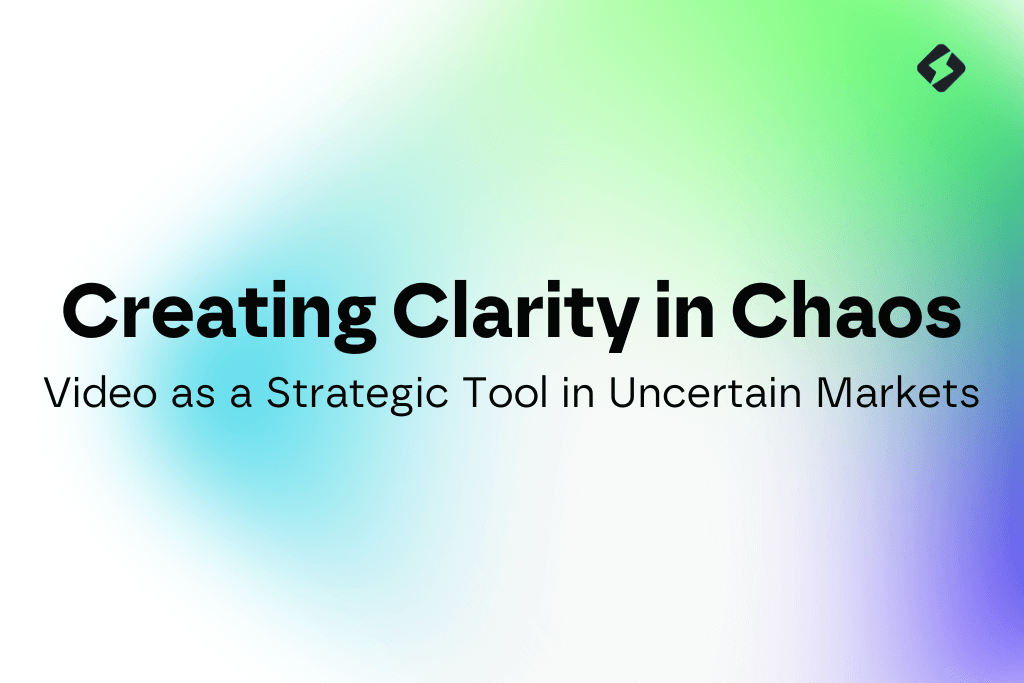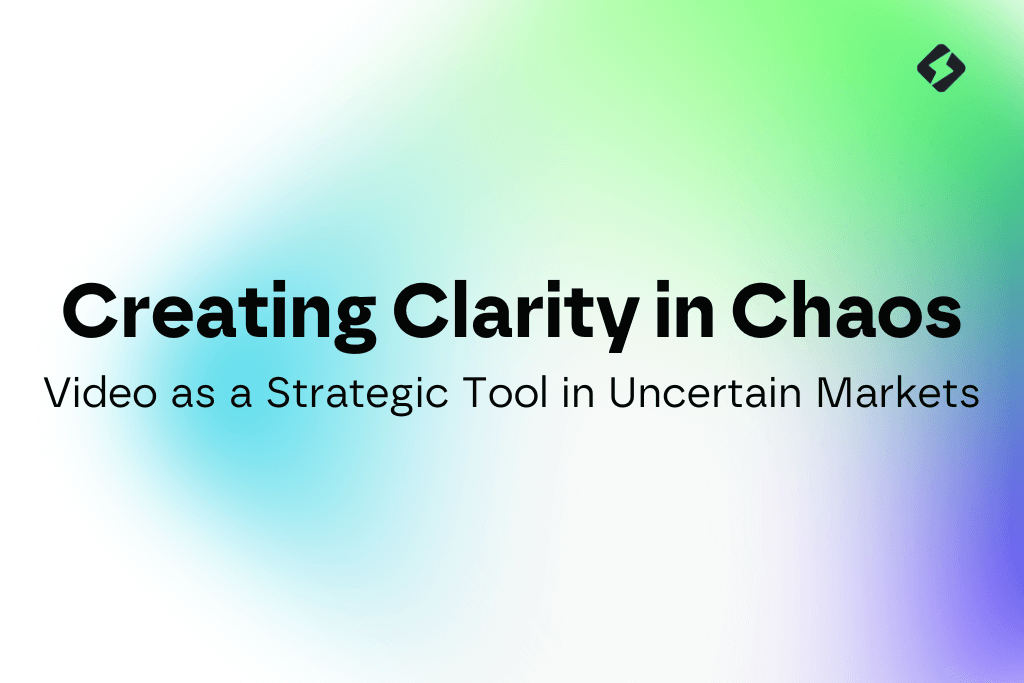
In our webinar, Creating Clarity in Chaos: Video as a Strategic Tool in Uncertain Markets, Mike Cheng, CEO & Founder @ Lumen5, was joined by our special guest speaker Stephanie Martin, Director of Communications @ LIXIL, to talk about how marketers and communications teams are navigating these uncertain times.
Stephanie shared her experience over at LIXIL, a publicly traded manufacturing company with over 50,000 employees operating in more than 150 countries worldwide, and how they’re approaching content production in a time where people are hungry for information and transparency.
Here’s what you missed! Save the full recording for later..
What we talked about
- Communications teams are facing a new reality. Between global unpredictability, market uncertainty, budget cuts, organizational restructuring, and more, tensions are high and it’s crucial to create content that’s efficient and transparent
- When things are clear internally, it shows up externally. As communicators, we must translate strategy into clarity, build trust between leadership and teams, and shape brand reputation from the inside out
- From $120k to $20k, LIXIL implemented a new strategy to work smart and cut down costs, which included transitioning from using third-party vendors for their video production to Lumen5.
- Companies across industries are prioritizing digital communications. Siemens transformed their digital strategy with Lumen5 so their content could be more timely, efficient, and strengthen their brand messaging
Lessons learned
Stephanie told us, “With a 50% reduction in communications staff and regular budget cuts, we were tasked with delivering just as much, if not more, and better content. We had to rethink how we worked.”
Here’s how they worked faster at LIXIL to produce content:
- Focused on being resourceful over resources
- Repurposed as much as possible
- Called on inter-team support in new ways
- Streamlined channels and focus areas
- Utilized tools like Lumen5 for content creation
Her team decided to bet on video, and Lumen5, to boost their internal production, cutting productions costs from $120k to $20k. When you capture attention in a distracted workplace through video comms, it allows teams to feel seen, building trust and empathy while delivering clarity.
Mike broke down how Siemens transformed their digital communications with Lumen5. Check out the full case study, but in the meantime, here are the highlights:
- Siemens is a technology pioneer and global powerhouse. They wanted to become a Digital Communications Leader and needed their marketing strategy to align with the company’s mission and digital-first branding, meeting customers where they are on social media channels
- “The times of total control are gone. Today, you have to be responsive. You have to empower your communicators to do the right things themselves and not go through all the approval processes that we used to have in the past.”

- Siemens created 4300+ Lumen5 videos in a single year
- Lumen5 was 25x more affordable than making videos through an agency
- They had a 98% faster turnaround on video production
Questions asked
“What do you find are the best strategies to get internal teams aligned when it comes to content production?”
Stephanie’s advice: “I think one portion that is often not thought of as much but has always served me very well, no matter what company or organization I’ve been a part of, is the power of relationships. Take the time to meet and have conversations within your internal teams that you need to work with. Build those relationships. Because what I’ve found is, when you lay that solid groundwork, when you make requests or wanna do something that’s a little out of the box from what’s been done before, people are usually more eager to support you and help you out.”
“During budget cuts, how can we convince stakeholders that an initial investment is worth the ROI? How did you have that conversation?”
Here’s what Mike had to say: “If what you’re proposing is leveraging technology to save tens of thousands, sometimes hundreds of thousands of dollars, that’s the angle to convince stakeholders. Saying, hey, this isn’t about losing profitability. It’s driving profitability up by becoming much more efficient, yet still having the same impact and sometimes even a larger impact.”
Watch the full recording






